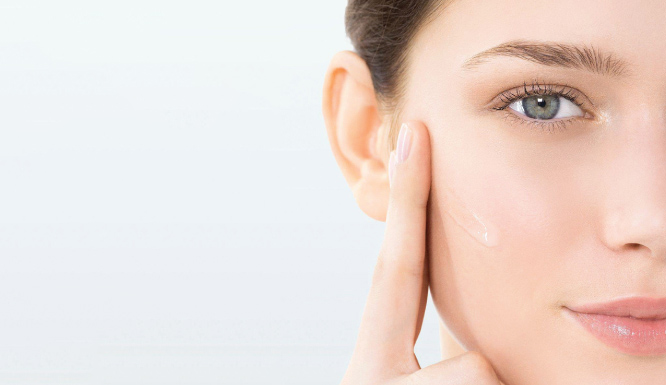
Everything you need to know about sun spots: definition, causes and solutions
Find out how to recognize and treat sun spots
How to recognize sun spots?
Sun spots come in a variety of colors, ranging from light brown to dark brown or even black, and their texture can be smooth or rough to the touch. Lentigines appear as small circles, reminiscent of the characteristic shape of lentils. Other spots can be larger and sometimes asymmetrical. They differ from melasma, which forms a mask, including the famous "pregnancy mask", feared by all pregnant women.
Where can sunspots be located?
Sun spots are most commonly seen on areas most exposed to UV rays, such as the face, neck, décolleté, and hands and shoulders.
Are sunspots dangerous?
Unlike melanomas, sun spots do not pose a health hazard. However, they are a form of skin scar that alters the uniformity of the complexion and are often perceived as a sign of aging, so they can be unwelcome.
What causes sun spots?
Several factors can contribute to the appearance of sun spots, including exposure to the sun's UV rays, skin aging, hormonal fluctuations, and exposure to air pollution.
The sun
Exposure to the sun's UV rays is the main cause of sun spots . Under the effect of these rays, the skin reacts by setting up a natural defense mechanism: tanning. However, as exposure to the sun accumulates, the melanin production process can become disrupted. This is when sun spots appear. The skin no longer tans evenly: the spots multiply and persist even after detanning.
Age
These sun spots are also called age spots because they are the result of physiological changes linked to skin aging . Our skin has a sun capital, that is to say a limited capacity to manage UV rays without suffering damage. This capital varies according to our skin type and our lifestyle habits. With age, the number of melanocytes, the cells responsible for the production of melanin, gradually decreases. At the same time, the remaining melanocytes produce melanin in a more concentrated way, which leads to irregular pigmentation of the skin. This is why brown spots are more common in individuals over 50 years old.
Hormones, drug treatments or healing
Some brown spots can also appear as a result of hormonal fluctuations or the use of photosensitizing medications. In addition, post-inflammatory hyperpigmentation can occur on a recent scar, which becomes pigmented in the sun.
Pollution
Air pollution can have a significant impact on skin health. Recent studies suggest that exposure to air pollutants, such as fine particles, exhaust fumes, and volatile organic compounds, can worsen skin damage caused by the sun. This is because these pollutants can penetrate the epidermis and trigger inflammatory reactions, which weaken the skin barrier and make the skin more vulnerable to UV rays. This interaction between pollution and UV rays not only accelerates the skin aging process, but also increases the risk of developing sun spots.
How to prevent sun spots?
The best way to prevent sun spots is to limit exposure to UV rays and take appropriate sun protection measures.
What sun protection should I use?
To effectively protect your skin from the effects of the sun, regular application of sunscreen is essential. Also look for sunscreens that contain minerals, such as zinc oxide and titanium dioxide, as these ingredients form an effective natural barrier to protect the skin.
To fully benefit from the benefits of the sun, Institut Esthederm sun care products are specially designed to protect the skin from damage caused by the sun's rays while strengthening its natural defences. Thanks to them, your skin is protected from UV rays, ensuring a radiant and long-lasting tan.
If you don't want to get a particular color or if spots have already appeared, opt for Photo Reverse Anti-Dark Spots Face Cream. Indeed, it ensures complete skin protection: it protects against UV rays, blocks the pigmentation process to prevent the appearance of new spots and reduces the appearance of existing spots.
To maintain your sunscreen's effectiveness, keep your products in a cool, dry place, away from direct sunlight. To prevent the product from drying out and changing its composition, carefully close the bottle or tube after each use. And reapply your sunscreen regularly, approximately every 2 hours (if you are at the beach), to ensure optimal protection.
What preventive measures?
To effectively prevent sunspots, it is essential to take several factors into account. First of all, knowing your phototype will allow you to adapt your sun protection according to your sensitivity to UV rays. It is also recommended to limit your exposure to the sun, especially between 10 a.m. and 4 p.m. In addition, the season and geographical area in which you are located can influence the intensity of UV rays, so you can adjust your protection accordingly. Finally, do not hesitate to wear covering clothing, a wide-brimmed hat, long-sleeved clothing and seek shade whenever possible.
How to correct sun spots?
Sun spots are not inevitable and there are several options to reduce or even eliminate them.
Anti-blemish creams
To reduce the appearance of sun spots, Institut Esthederm has developed a range of anti-spot treatments . The Intensive Vitamin C line offers an innovative solution by combining two forms of vitamin C for immediate and continuous effectiveness on spots. It acts on the causes of pigment spots while supporting the skin's natural mechanisms . Used morning and evening. Also the Brightening Line Brightening Cream, Brightening Foam and Brightening Anti Dark Spots Serum offer a complete treatment that visibly helps the skin regain its radiance. Little by little, pigment spots fade, giving way to more beautiful, smoother and more even skin.
Dermatological care
Dermatological treatments such as laser or liquid nitrogen and microdermabrasion can also help remove sun spots. Laser or liquid nitrogen treatments specifically target pigmented areas of the skin by specifically burning the melanin to gradually eliminate them. As for microdermabrasion, this process uses small particles that mechanically exfoliate (and not chemically, like peeling) the outer layer of the skin, thus promoting cell renewal and reducing spots. These treatments are generally performed by dermatologists and can be effective in achieving more even and radiant skin.
Peeling
In a chemical peel, exfoliating acids are applied to the skin to remove the surface layers containing pigmented cells. This promotes cell renewal and the skin is then smoother and more radiant.
